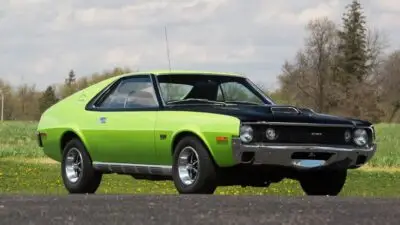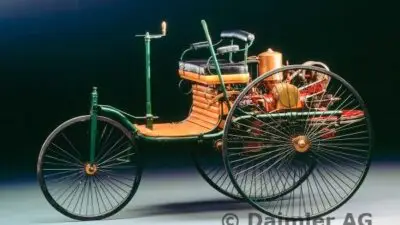Pontiac, once a cornerstone of American automotive culture, began as a GM brand that evolved from modest beginnings to become synonymous with performance and excitement. From its start in 1926 to its peak in the muscle car era of the 1960s and 70s, Pontiac captured the hearts of car enthusiasts with iconic models like the GTO and Firebird. The brand’s decline and eventual discontinuation in 2010 during GM’s restructuring marked the end of an 84-year legacy that had helped define American muscle car history.

What made Pontiac special wasn’t just powerful engines or sleek designs, but how it represented American automotive innovation and cultural identity. As government regulations changed and the market shifted away from performance vehicles, Pontiac struggled to reinvent itself. The brand that once dominated with its “Wide Track” stance and performance-oriented marketing gradually lost its distinct identity as it drifted toward comfort over the raw power that had made it famous.
Key Takeaways
- Pontiac rose from humble beginnings to become an iconic performance brand before its discontinuation in 2010 after 84 years of production.
- The muscle car era of the 1960s-70s represented Pontiac’s golden age with legendary models like the GTO and Firebird defining American automotive culture.
- Changing regulations, market shifts, and loss of brand identity contributed to Pontiac’s decline despite its significant cultural impact that continues through collectors today.
The Origins of Pontiac

Pontiac emerged from humble beginnings to become one of America’s most iconic automobile brands. Its creation marked an important strategic move for General Motors in the early 20th century automotive market.
Founding and Early Years
Pontiac was officially established as a brand in 1926, though its roots trace back to the Oakland Motor Car Company founded in 1907. General Motors acquired Oakland in 1909, making it one of GM’s earliest acquisitions. The Pontiac name was inspired by the famous Ottawa chief who led an uprising against the British in the 18th century.
The first Pontiac car debuted at the 1926 New York Auto Show. It featured a six-cylinder engine that delivered performance at a price point between Chevrolet and Oldsmobile. This positioning proved immediately successful with American consumers.

Early Pontiac models gained popularity for their reliability and value. When the Great Depression hit, Pontiac’s affordability helped the brand survive while other car manufacturers struggled or disappeared entirely.
Pontiac’s Role in General Motors
Within GM’s brand hierarchy, Pontiac was positioned as the “excitement division” above Chevrolet but below Oldsmobile, Buick, and Cadillac. This strategic placement allowed GM to capture customers looking to upgrade from entry-level vehicles.
By the 1930s, Pontiac had established itself as a crucial part of GM’s “ladder of success” marketing strategy. The brand attracted middle-class Americans who wanted more features and performance than Chevrolet offered but couldn’t afford higher-end GM products.
Pontiac’s early success convinced GM executives to fully support the brand with dedicated manufacturing facilities and marketing resources. The brand’s distinctive “Silver Streak” styling, featuring chrome strips along the hood, became a recognizable trademark in the automotive world.
Pontiac proved that GM could successfully create and maintain distinct brand identities while sharing underlying components across divisions, a business model that would define American car manufacturing for decades.
Pontiac’s Golden Era: The Muscle Car Revolution

Pontiac’s most iconic period came during the 1960s and early 1970s when the brand became synonymous with American muscle car performance. This era established Pontiac as a performance leader and created legendary vehicles that continue to influence automotive culture today.
Birth of the Pontiac GTO
The Pontiac GTO, often credited as America’s first true muscle car, emerged in 1964 through a brilliant circumvention of General Motors’ corporate rules. John DeLorean, Pontiac’s chief engineer, and marketing specialist Jim Wangers defied GM’s ban on racing by creating a performance package for the midsize Tempest.

The original GTO wasn’t a standalone model but an option package that included a powerful 389 cubic-inch V8 engine with the famous “Tri-Power” carburetor setup. This configuration produced an impressive 348 horsepower in a relatively lightweight A-body platform.
What made the GTO revolutionary wasn’t just its power but its affordability. Performance was no longer limited to expensive sports cars – now young buyers could access serious horsepower at a reasonable price.
The 1960s and the Height of Performance
By the mid-1960s, Pontiac had positioned itself as GM’s performance division. The brand’s slogan “We Build Excitement” wasn’t just marketing – it was backed by genuine engineering innovation.
Pontiac continued developing more powerful engines throughout the decade. The Ram Air IV engines represented some of the most potent factory-installed power plants of the era. These high-compression engines with improved cylinder heads delivered exceptional performance for their time.
Pontiac’s muscle car lineup expanded beyond the GTO to include models like the Firebird, launched in 1967. These rear-wheel drive performance machines featured aggressive styling that matched their impressive capabilities.

The brand dominated in motorsports during this period, with countless drag strip victories that cemented its reputation among performance enthusiasts. Pontiac’s engineering team consistently pushed boundaries while maintaining vehicles that could be daily driven.
Impact of the Trans Am and Smokey and the Bandit
The Pontiac Trans Am, introduced in 1969 as a performance package for the Firebird, would become perhaps the brand’s most recognizable model. With its distinctive appearance including the prominent hood bird decal, the Trans Am epitomized American performance.

The Trans Am’s popularity exploded in 1977 when it starred in the film “Smokey and the Bandit.” Burt Reynolds’ black and gold Special Edition Trans Am became an instant cultural icon, driving sales to record heights. Pontiac could barely keep up with demand as the Trans Am became a symbol of freedom and rebellion.

Even as other muscle cars declined during the emissions-restricted late 1970s, the Trans Am maintained its performance credentials. While horsepower figures dropped from the glory days, the Trans Am preserved the muscle car spirit through challenging times for American performance vehicles.
The Trans Am would later evolve to incorporate modern technology, eventually utilizing GM’s LS1 engine in its final generations, maintaining Pontiac’s performance legacy until the brand’s final days.
Standout Pontiac Models and Innovations

Pontiac created several iconic vehicles that defined American performance and style. These models showcased innovative engineering and bold design choices that helped the brand stand out in the competitive auto industry.
The Bonneville and Grand Prix Legacy
The Pontiac Bonneville debuted in 1957 as a limited-edition performance convertible. It quickly became known for combining luxury with power in a way few other cars could match. By the 1960s, the Bonneville had evolved into Pontiac’s flagship full-size model.
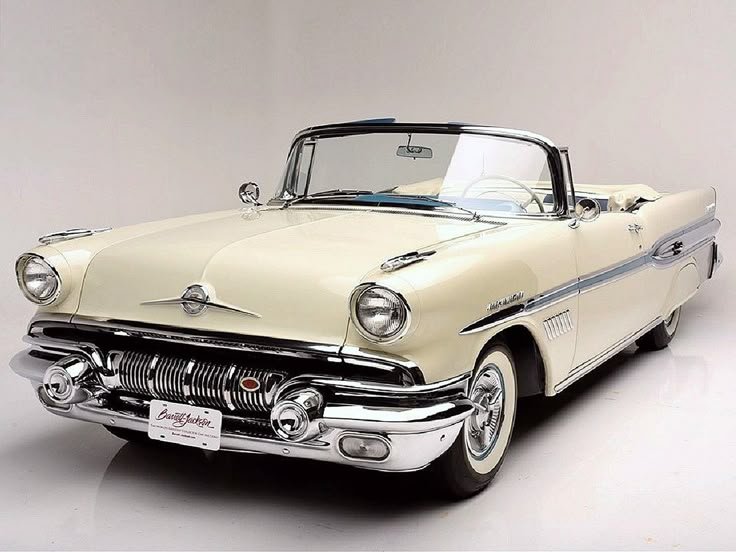
The Grand Prix launched in 1962 as a personal luxury car with performance credentials. It featured distinctive styling elements including its iconic “coke bottle” design in later generations.

Both models helped establish Pontiac’s reputation for building exciting vehicles. The Grand Prix, especially in its 1969-1972 iterations, offered a perfect blend of comfort and performance that appealed to buyers wanting something more distinctive than ordinary sedans.

These models demonstrated how Pontiac understood American car buyers wanted both luxury and performance without compromise.
Adoption of V8 Engines and Performance Upgrades
Pontiac made its mark in the performance car segment with powerful V8 engines. The brand’s 389 cubic inch V8 became legendary when paired with the GTO, delivering up to 348 horsepower in Tri-Power configuration.
The 1964 GTO, often credited as the first true muscle car, revolutionized the auto industry by putting a large-displacement engine in a mid-size body. This formula created a performance sensation that competitors rushed to copy.
Pontiac’s engineering innovations weren’t limited to raw power. The division developed the “Wide Track” stance that improved handling while creating a distinctive look. Their overhead cam six-cylinder engine in the 1966 Tempest was remarkably advanced for American cars of that era.
The Pontiac Firebird became another performance icon, especially in Trans Am form. These cars featured aerodynamic improvements, handling packages, and visual enhancements that made them standout performers on both street and track.
Challenges in the Automotive Landscape

Pontiac faced several significant hurdles as the automotive industry evolved in the late 20th and early 21st centuries. These challenges fundamentally altered how car manufacturers operated and ultimately contributed to Pontiac’s downfall.
Rising Fuel Costs and Emissions Regulations
The 1970s brought dramatic changes to the auto industry with the oil crisis forcing Americans to reconsider their love of gas-guzzling vehicles. Fuel costs skyrocketed, making Pontiac’s powerful V8 engines suddenly less appealing to budget-conscious consumers.
Strict emissions regulations further complicated Pontiac’s business model. The brand built its identity on high-performance vehicles, but new environmental laws required significant engine modifications that often reduced horsepower and performance.
These regulations continued to tighten through the 1990s and 2000s. While competitors developed fuel-efficient technologies, Pontiac struggled to balance its performance heritage with new environmental requirements.
The brand made attempts with models like the fuel-efficient G5, but these vehicles lacked the excitement that Pontiac fans expected, creating an identity crisis for the brand.
Increased Competition from Other Car Brands
The automotive landscape grew increasingly crowded as foreign manufacturers gained stronger footholds in North America. Japanese brands like Toyota and Honda offered reliable, fuel-efficient alternatives that appealed to practical consumers during economic downturns.
Even within General Motors, Pontiac faced internal competition. The Chevrolet Camaro often competed directly with Pontiac models, while brands like Saturn were created to target specific market segments that might have otherwise chosen Pontiac vehicles.

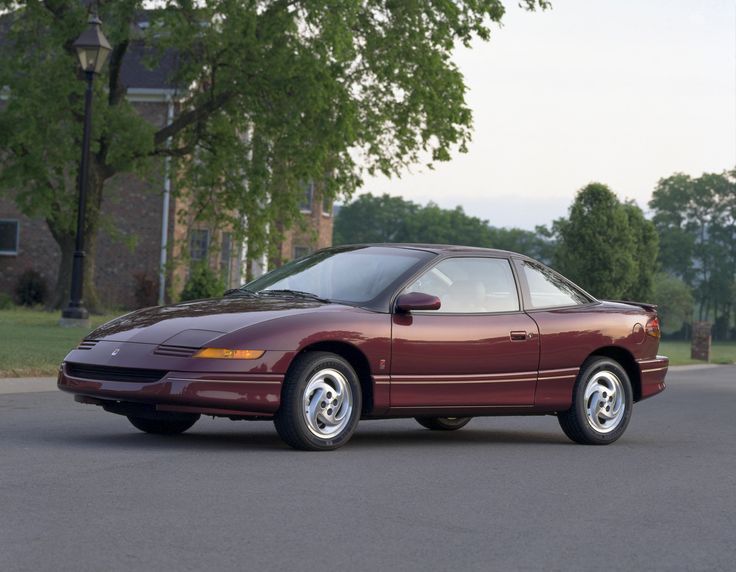
GM’s failure to give Pontiac a clear brand identity compared to its other divisions further muddied the waters. As GM invested in niche brands like Hummer, resources for Pontiac diminished.
By the early 2000s, Pontiac’s aging product lineup couldn’t compete effectively against newer, more innovative vehicles from both foreign and domestic rivals. This competitive disadvantage became painfully evident during the 2008 financial crisis.
The Fall of the Pontiac Brand

Pontiac’s decline came after decades of success, ultimately ending with General Motors’ difficult decision to discontinue the iconic brand during financial hardship.
Declining Sales and Brand Identity Crisis
Pontiac struggled with its identity in the late 1990s and early 2000s. The brand that once stood for performance and excitement began losing its unique position in the market. Many models became rebadged versions of other GM vehicles, diluting the legendary American car brand image.
Sales figures told a concerning story. Between 2000 and 2008, Pontiac’s annual sales dropped from approximately 600,000 units to under 300,000. The brand’s market share fell from 3.1% to just 1.8%.
Product planning decisions further complicated matters. Models like the Aztek, though innovative, faced harsh criticism for styling. Meanwhile, promising vehicles like the G8 sedan came too late to save the brand.
The 2008 Financial Crisis and GM Bankruptcy
The 2008 financial crisis delivered the final blow to Pontiac. As the economy collapsed, auto sales plummeted across all brands. GM’s precarious financial situation became unsustainable.
In 2009, facing bankruptcy, GM made dramatic cuts. The company entered Chapter 11 reorganization on June 1, 2009. As part of GM’s restructuring plan, several brands including Pontiac were discontinued.
The decision wasn’t solely based on Pontiac’s performance. GM needed to focus resources on core brands that could return to profitability quickly. By eliminating Pontiac, GM could streamline operations and reduce overlap in their vehicle lineup.
The last Pontiac rolled off the assembly line in 2010, ending a brand with over 80 years of American automotive history.
The End of an Era: Discontinuation and Legacy

General Motors discontinued the Pontiac nameplate in 2010 as part of its restructuring during the financial crisis. The decision ended over 80 years of automotive history and left many fans wondering what could have been for the performance-oriented brand.
Comparisons with Other Discontinued Brands
Pontiac’s demise followed a pattern similar to other discontinued American car brands. Oldsmobile, also owned by GM, was phased out in 2004 after 107 years of production. Plymouth, under Chrysler, ended in 2001 after serving as their entry-level brand since 1928.
Mercury, Ford’s mid-range brand, was discontinued in 2011, just a year after Pontiac. These brands shared common factors in their demise:
- Declining sales
- Brand identity confusion
- Corporate consolidation strategies
- Economic pressures
Unlike some discontinued brands, Pontiac had maintained strong cultural relevance until the end. The G8 sedan and Solstice roadster showed the brand was still capable of producing exciting vehicles, making its discontinuation feel premature to many enthusiasts.
Pontiac’s Ongoing Influence on the Automotive World
Despite its discontinuation, Pontiac’s legacy continues to influence the automotive industry. Classic Pontiac models like the GTO, Firebird, and Trans Am remain highly sought after by collectors and enthusiasts.
Pontiac’s focus on performance helped establish the muscle car era. This philosophy continues in modern vehicles across many brands. The GTO, often credited as America’s first true muscle car, created a template that manufacturers still follow.
Car clubs, restoration projects, and vintage racing events keep Pontiac’s spirit alive. Annual Pontiac gatherings draw thousands of fans nationwide.
The brand’s design language—with distinctive split grilles and aggressive styling—influenced automotive design trends for decades. Even without new models, Pontiac’s impact on automotive culture remains significant and has cemented its place in car history.
Pontiac’s Cultural Impact and Collectibility

Pontiac cars left an indelible mark on American culture and continue to be prized by collectors. The brand created vehicles that became icons in entertainment and maintain strong value in today’s classic car market.
Pontiac in Popular Media
Pontiac cars roared into American pop culture through movies, television, and music. The 1977 film Smokey and the Bandit catapulted the Trans Am to legendary status as Burt Reynolds’ black and gold muscle car outran law enforcement across the South.
The GTO appeared in countless songs, including “Little GTO” by Ronnie and the Daytonas. Television shows like “Knight Rider” featured modified Pontiacs, with KITT being a customized 1982 Trans Am.
Music videos, advertisements, and racing movies frequently showcased Pontiac’s performance cars. These appearances cemented the brand’s reputation for excitement and rebellion.
The distinctive styling and performance of Pontiac vehicles made them natural choices for filmmakers wanting to convey speed, freedom, and American muscle.
The Collector Car Market
Pontiac’s abrupt end in 2010 created a finite supply of vehicles, driving collector interest. The most sought-after models include:
- 1960s GTOs: Often called the first true muscle car
- 1970s Trans Ams: Especially Bandit editions with black and gold paint
- Firebird Formula models: Prized for performance and rarity
- Final production models: 2009 G8 GXP and Solstice GXP
Pristine examples of classic Pontiacs regularly command six-figure prices at auctions. The 1969 GTO Judge and 1973-74 Super Duty Trans Ams are particularly valuable due to their limited production numbers.
Collectors appreciate Pontiac’s performance heritage, distinctive styling, and historical significance. As with most classic cars, originality, documentation, and condition heavily influence market value.
The Future of Performance and the Legacy Continues

While Pontiac disappeared from showrooms in 2010, its spirit lives on in modern vehicles and continues to influence automotive design and performance philosophy worldwide.
Modern Muscle and EVs Inspired by Pontiac
The DNA of Pontiac’s performance legacy can be seen in today’s muscle cars and electric vehicles. GM’s recent electric offerings, particularly the GMC Hummer EV, carry forward Pontiac’s emphasis on bold styling and impressive performance metrics.
The Hummer EV delivers over 1,000 horsepower while featuring aggressive styling cues that echo the confident stance once found in Pontiac’s lineup. These powerful electric vehicles demonstrate how Pontiac’s “excitement division” philosophy has evolved rather than disappeared.
Some enthusiasts have even taken matters into their own hands, with legal attempts to revive the Pontiac name. This grassroots passion shows the enduring connection fans feel to the brand.
Global Influence: Holden Monaro and Beyond
Pontiac’s influence extended well beyond American shores, most notably through its relationship with Australia’s Holden brand. The Holden Monaro, rebadged as the Pontiac GTO from 2004-2006, represented a global approach to performance cars.
This Australian-built, Pontiac-badged GTO maintained the spirit of the original while introducing international engineering perspectives. Despite mixed market reception, it demonstrated how Pontiac’s performance philosophy could translate globally.
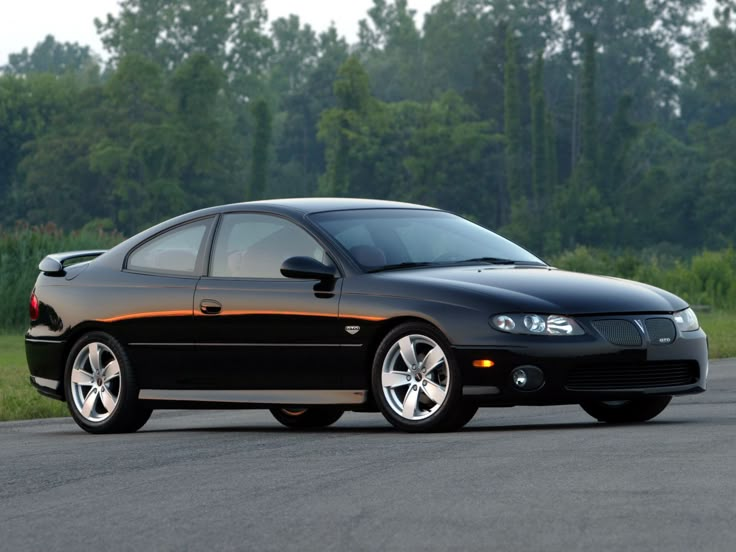
The GTO revival showed that performance cars could be developed through international collaboration, a practice now common among automakers. Today’s global performance vehicles often feature the same balance of everyday usability and exhilarating performance that defined many of Pontiac’s iconic models.
Performance car divisions at various manufacturers continue to embrace Pontiac’s philosophy of making exciting vehicles accessible to everyday drivers.
Frequently Asked Questions

Pontiac’s journey through automotive history left many questions about its demise, iconic vehicles, and cultural impact. Understanding these aspects helps paint a complete picture of this once-beloved American brand.
What were the key factors that contributed to Pontiac’s discontinuation?
Pontiac’s discontinuation stemmed from several interconnected factors. General Motors faced significant financial challenges during the 2008-2009 economic crisis, forcing them to streamline operations.
The brand struggled to reinvent itself as government regulations changed and consumer preferences shifted away from muscle cars. Pontiac’s sales had been declining for years before the final decision.
GM’s restructuring plan required focusing on fewer brands to survive bankruptcy. Pontiac, despite its storied history, didn’t fit the company’s future vision and lacked a clear identity in the modern automotive landscape.
Which year marked the official end of Pontiac’s operations?
Pontiac’s production was gradually wound down throughout 2009. The final Pontiac vehicle rolled off the assembly line in late 2009, with 2010 being the last model year for the brand.
General Motors officially discontinued the Pontiac brand as part of its bankruptcy reorganization. The decision was announced in April 2009, giving the brand a brief period to complete its remaining production commitments.
How did Pontiac’s product lineup change over the years?
Pontiac began as a companion make to Oakland in 1926, gradually establishing itself as GM’s performance division. The 1960s saw Pontiac define itself with iconic muscle cars like the GTO and Firebird.
The 1970s brought challenges with fuel crises and emissions regulations, forcing a shift away from pure performance. During the 1980s and 1990s, Pontiac attempted to maintain its performance image while adapting to changing market demands.
In its final years, Pontiac’s lineup became less distinctive, sharing more platforms with other GM brands. Models like the G6 and Solstice tried to recapture the brand’s excitement, but struggled to establish a clear identity.
What impact did the discontinuation of Pontiac have on the automotive industry?
Pontiac’s discontinuation signaled a major shift in the American automotive landscape. It demonstrated how even historic brands with loyal followings could disappear amid economic pressures and changing market conditions.
The loss of Pontiac removed a significant competitor from the affordable performance car segment. This created opportunities for other manufacturers to capture Pontiac’s former customer base.
Pontiac’s demise also highlighted the challenges of maintaining distinctive brand identities within large automotive conglomerates. The industry learned valuable lessons about brand management and the importance of clear positioning.
Can you provide a history of the Pontiac Firebird’s development and significance?
The Pontiac Firebird debuted in 1967 as Pontiac’s response to the Ford Mustang and as a companion to the Chevrolet Camaro. It quickly established itself as a performance icon with distinctive styling.
The Trans Am variant became particularly legendary, especially after its prominent role in “Smokey and the Bandit.” Through four generations, the Firebird represented American performance, with highlights including the 455 Super Duty and the turbocharged Trans Am of the 1980s.
The final generation Firebird (1993-2002) maintained V8 power when many competitors had abandoned it. When production ended, it marked the loss of one of America’s most recognizable performance cars.
What legacy did Pontiac leave behind in the realm of American automobiles?
Pontiac’s greatest legacy remains its role in creating the muscle car segment with the 1964 GTO. This revolutionary approach to performance changed the American automotive landscape forever.
Innovations like the Wide Track stance and distinctive split grille design influenced automotive styling for decades. Pontiac’s marketing approach, which emphasized performance and excitement, also set standards for how cars could be promoted.
Today, Pontiac vehicles are increasingly valued by collectors, with models like the GTO, Trans Am, and even later vehicles like the G8 and Solstice appreciating in value. The passion of Pontiac owners continues through clubs, events, and online communities dedicated to preserving the brand’s memory.

